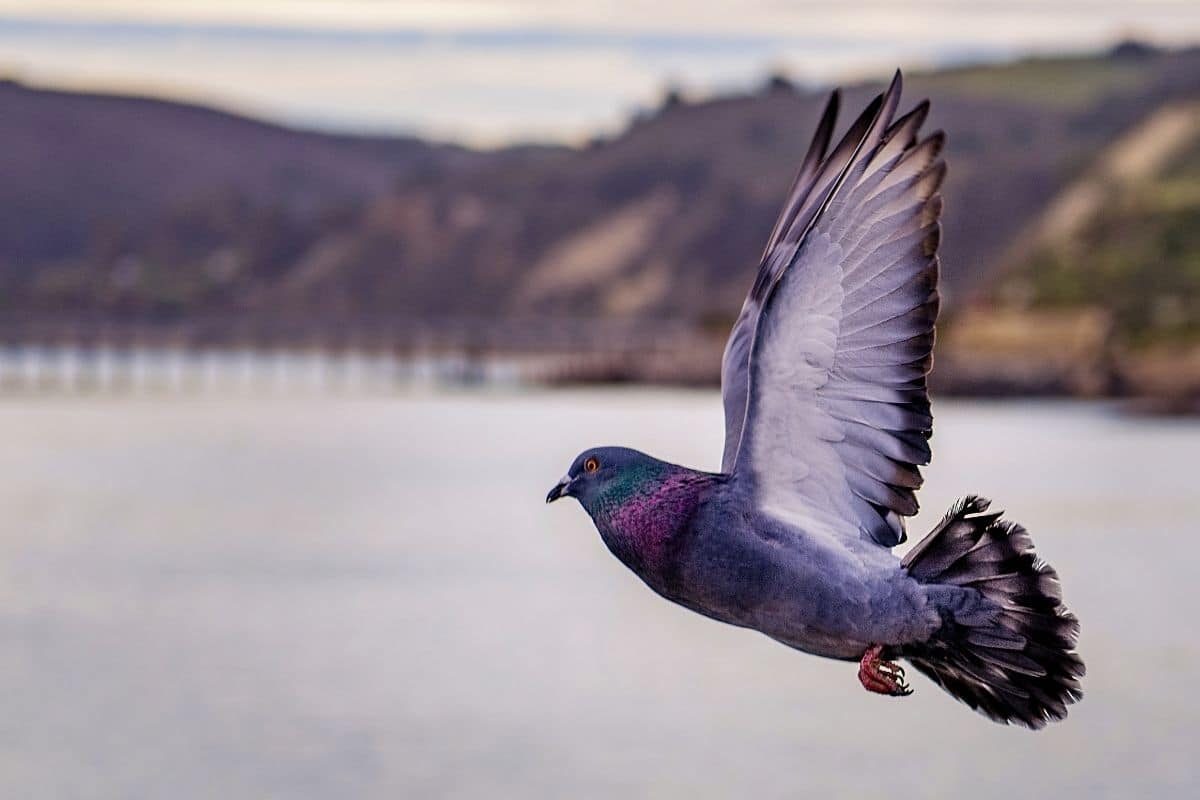
Despite the fact that the landscape below them has changed considerably over the years, the carrier pigeons manage to find their home 10 kilometers away quite efficiently.
It proves that racing pigeons have an impressive spatial memory, in which memories can last for years. That can be read in the magazine Proceedings of the Royal Society B.
Experiments
The scientists draw their conclusions after experiments with carrier pigeons. The foundations for these experiments were already laid in 2016. Then the researchers trained a large number of carrier pigeons to fly back home from a location about 10 kilometers from the dovecote. In the years that followed, the carrier pigeons were not released from the same location until 2019. Then the researchers traveled with a number of carrier pigeons to the location 10 kilometers away and released the birds there. Also some carrier pigeons were released that had never flown home from this location. These carrier pigeons served as a control group. Secretly, the researchers did not expect that the carrier pigeons that had flown home from this location years earlier would fly much more efficiently than the pigeons from the control group to their dovecote. But it did.
Different landscape
“We knew that carrier pigeons could remember a route with all kinds of landmarks for days,” the researchers say. “But in this case, the route they used had changed significantly after 3 years.” And yet the trained carrier pigeons flew home much easier. “Some of these pigeons even followed the exact same route they had used in 2016,” researcher Julien Collet told me. Scientias.nl.
Again
The researchers were so surprised that a year later they decided to take the test again. They traveled again to the location 10 kilometers away, this time taking home pigeons that had not flown home from this spot for four years. And again, the route these homing pigeons took was much more efficient than the route their untrained ilk took to get home.
Variation
However, the carrier pigeons – both in 2019 and 2020 – generally had a little more trouble getting home than in 2016. What is also striking is that there were large differences between the performances of individual carrier pigeons. “Only a few of them used the exact same route as in 2016. Some others were really inefficient and still others flew a fairly straight line home, but that line was different from the one they flew in 2016. In other words: there is quite a bit of variation between the different carrier pigeons; some seem to remember it all, others not at all. It may be that they have each learned to orientate themselves on the basis of different landscape features and that after 3 or 4 years some of these landscape features have disappeared. But that probably doesn’t fully explain the behavior of the most inefficient birds.”
Pretty special
In any case, it is quite special that most racing pigeons manage to get home years later via a fairly efficient route. “The fact that they can remember where their home is and return to it is not unique,” emphasizes Collet. “Just think of turtles, albatrosses, salmon or eels that return to their birthplace after years thousands of kilometers away at sea. But what is different in the case of the carrier pigeons is that they could remember a specific place and some of them could also remember specific routes or successive landscape features and use them to get home. And that years after they last used that route. When we released these experienced carrier pigeons from a place they had never been before, they flew home no more efficiently than the control group, so it really only applies to the location they already knew.”
Image
The fact that carrier pigeons are able to remember routes or parts thereof for years raises several new questions and can radically change our view of the carrier pigeon. “What else can they remember throughout their lives? And how do they filter out which of these memories to call on at any given moment? In combination with the apparent variation that exists between individuals, we come to see homing pigeons more and more as complex ‘persons’, with a history, a personality, etc. This gives the homing pigeons the cliché that they are very simple, very beautiful rectified!”
But the research is not only a boost for the image of the carrier pigeon. It also has implications for the future, in which more and more animals will face extreme weather events and a changing habitat due to climate change. In order to better estimate the consequences this will have for these animals, a better understanding of the way in which they navigate and the extent to which they appeal to (old) memories is crucial. “Understanding how their memory works, how they use it, and how long memories last may also help us better understand how animals cope with rapid changes in their habitat,” Collet said. More research into the memory of (wild) animals is therefore important. “Because where animals go may depend on their complex, personal life history.”
Source material:
“Pigeons retain partial memories of homing paths years after learning them individually, collectively or culturally” – Proceedings of the Royal Society B
Interview with Julien Collet
Image at the top of this article: Tim Mossholder via Pexels